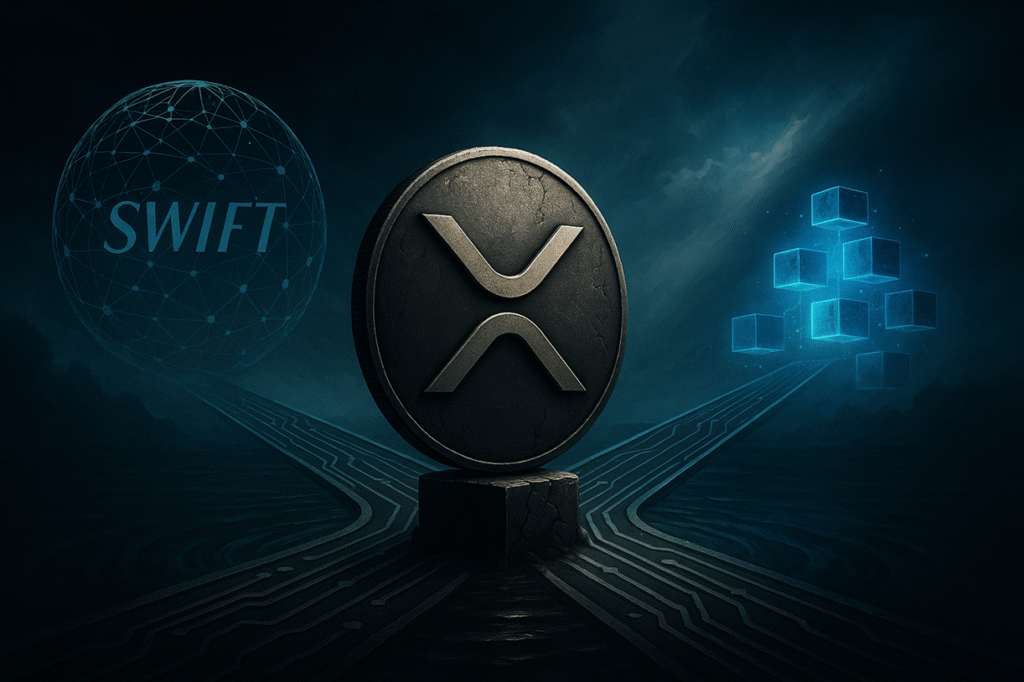In the rapidly evolving world of finance and cryptocurrency, staying informed and agile is essential. With technological advancements reshaping the landscape, key players like Swift and Ripple find themselves at significant crossroads. As Swift embarks on integrating blockchain technology into its infrastructure, Ripple faces new challenges and opportunities to redefine its strategy and leverage the XRP Ledger’s potential. This piece delves into the strategic decisions shaping the future of these industry giants, offering insights into their impact on global finance.
Ripple’s Strategic Crossroads: The Impact of Swift’s Blockchain Integration
Challenging the Status Quo: Ripple’s Next Move
The recent announcement from Swift at the 2025 Sibos conference in Frankfurt signaled a transformative shift, incorporating a blockchain-based ledger into its operations. This development positions Swift at the forefront of instant cross-border settlements, sparking a reevaluation within Ripple’s strategic circle. CoreNest Capital GP, Bob Ras, has openly suggested that Ripple reconsider its path forward as Swift makes significant strides in the blockchain domain. Ras highlights the necessity for Ripple to pivot and refine its focus to maintain relevance.
Ras has further critiqued Ripple’s previous ventures, indicating that the lack of smart contracts on the XRP Ledger hampers developer engagement and broader utility. Despite efforts to expand into areas such as NFTs and stablecoins, the consensus is that Ripple needs a strategic overhaul to achieve the utility required for sustained success.
XRP’s Position Amidst Chainlink and Swift’s Advances
The developments have prompted lively debates over the valuation and financial strategies of Ripple compared to competitors like Chainlink. Dave Weisberger, co-founder of CoinRoutes, questions XRP’s valuation relative to Chainlink, which boasts a strategic partnership with Swift. The conversation underscores a critical inquiry: does the adoption of bank-friendly blockchain solutions favor platforms like Chainlink more than Ripple’s XRP?
Ripple’s technical team has historically concentrated on built-in payment tools and native DEX capabilities rather than adopting a full-featured virtual machine. Proposals such as “Hooks” and the launch of the XRPL EVM Sidechain in mid-2025 aim to enhance developer experience and expand programmability across the platform.
Strategic Expansion: Ripple’s Evolving Focus
Ripple’s efforts extend beyond cross-border payments to embrace tokenization and stablecoin initiatives. Their introduction of the RLUSD stablecoin in 2024 and subsequent infrastructure acquisitions signal a strategic pivot toward providing comprehensive financial services. The synergy or competition between Ripple’s and Swift’s objectives hinges on how effectively Ripple can integrate these initiatives into a cohesive strategy that yields tangible value.
As of the latest updates, XRP trades at $2.86, reflecting market response to these announcements.
Frequently Asked Questions
Is Ripple prepared to compete with Swift’s blockchain advancements?
Ripple’s ongoing developments, such as the XRPL EVM Sidechain and strategic partnerships, position it to compete by enhancing its technological stack and expanding its ecosystem. However, Swift’s integration of blockchain technology poses significant competitive pressure, necessitating innovation and adaptability from Ripple.
What role does Chainlink play in this evolving landscape?
Chainlink’s collaboration with Swift on interoperability protocols highlights its pivotal role as a bridge between traditional banking systems and blockchain technology. This position enables it to serve as a key middleware solution that enhances the functionality of existing financial infrastructure without necessitating complete overhauls.
Can XRP maintain its market valuation amidst rising competition?
XRP’s valuation will depend on Ripple’s ability to leverage its blockchain infrastructure effectively and expand its utility beyond simple value transfers. Strategic partnerships, technological advancements, and a focus on scalable solutions will be crucial in sustaining its market position.

